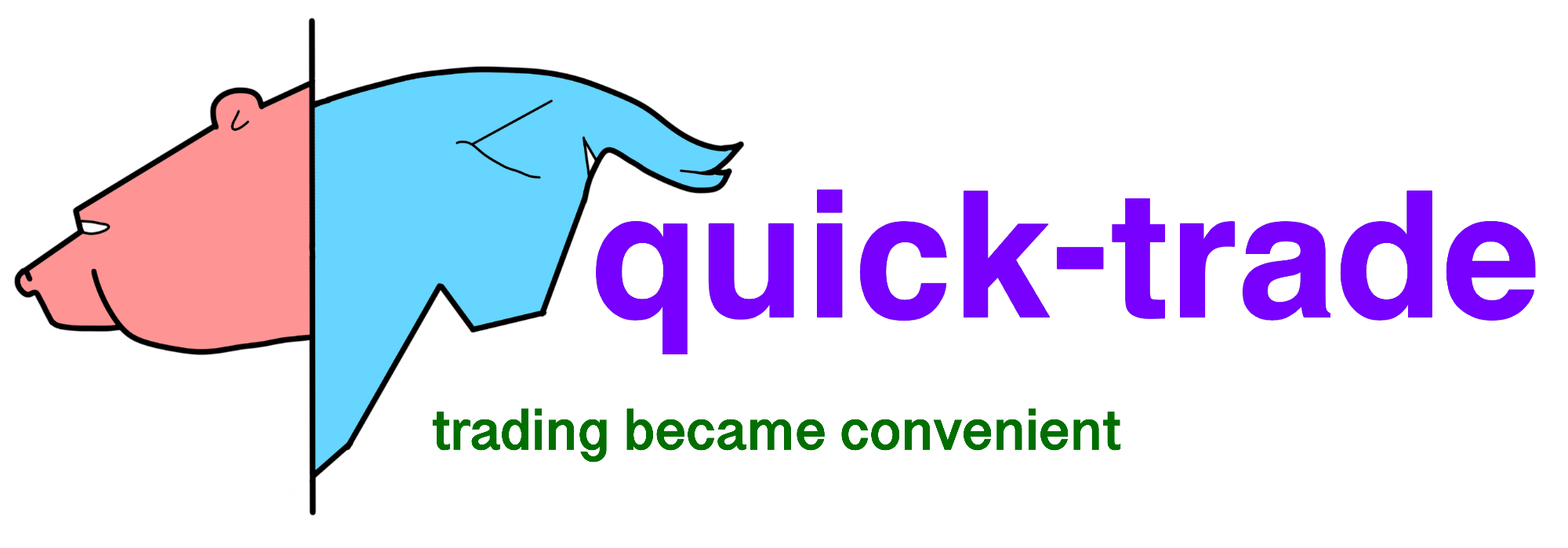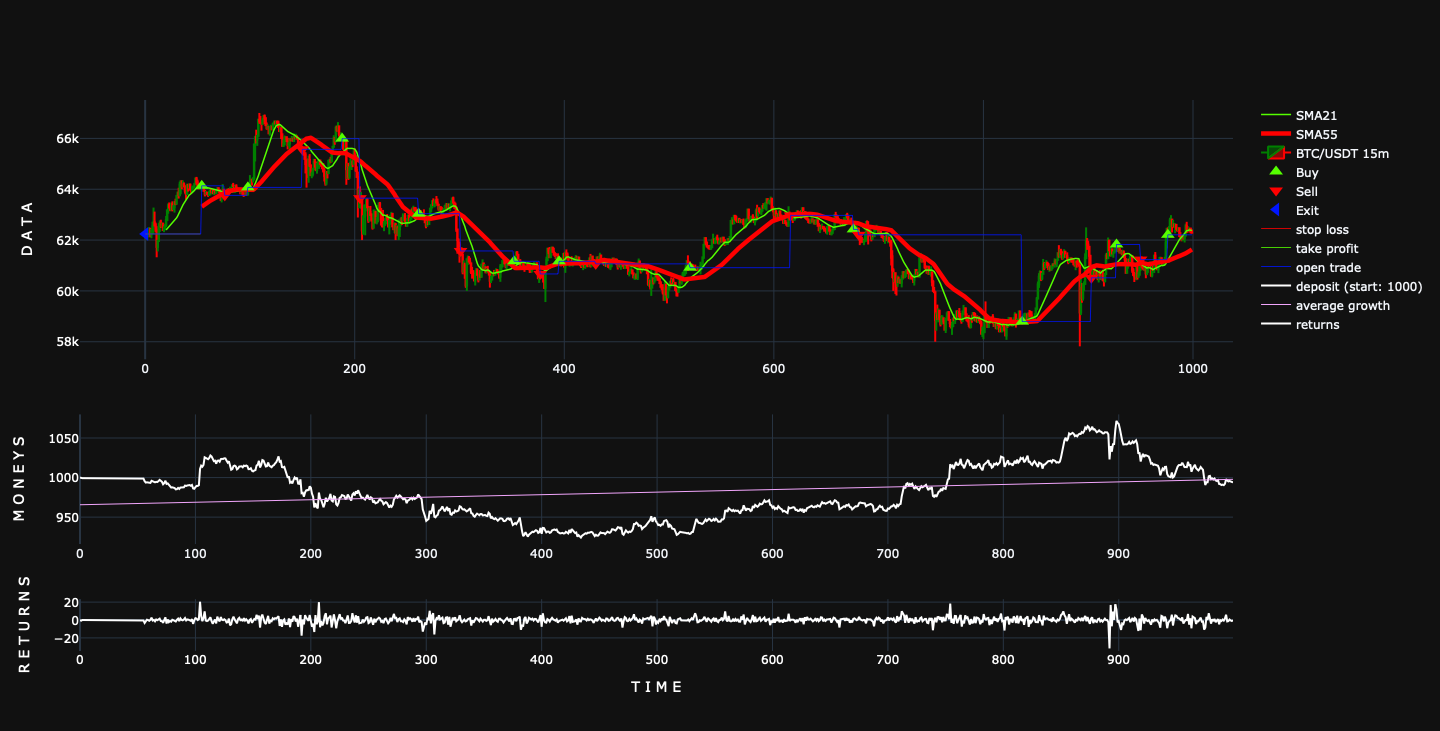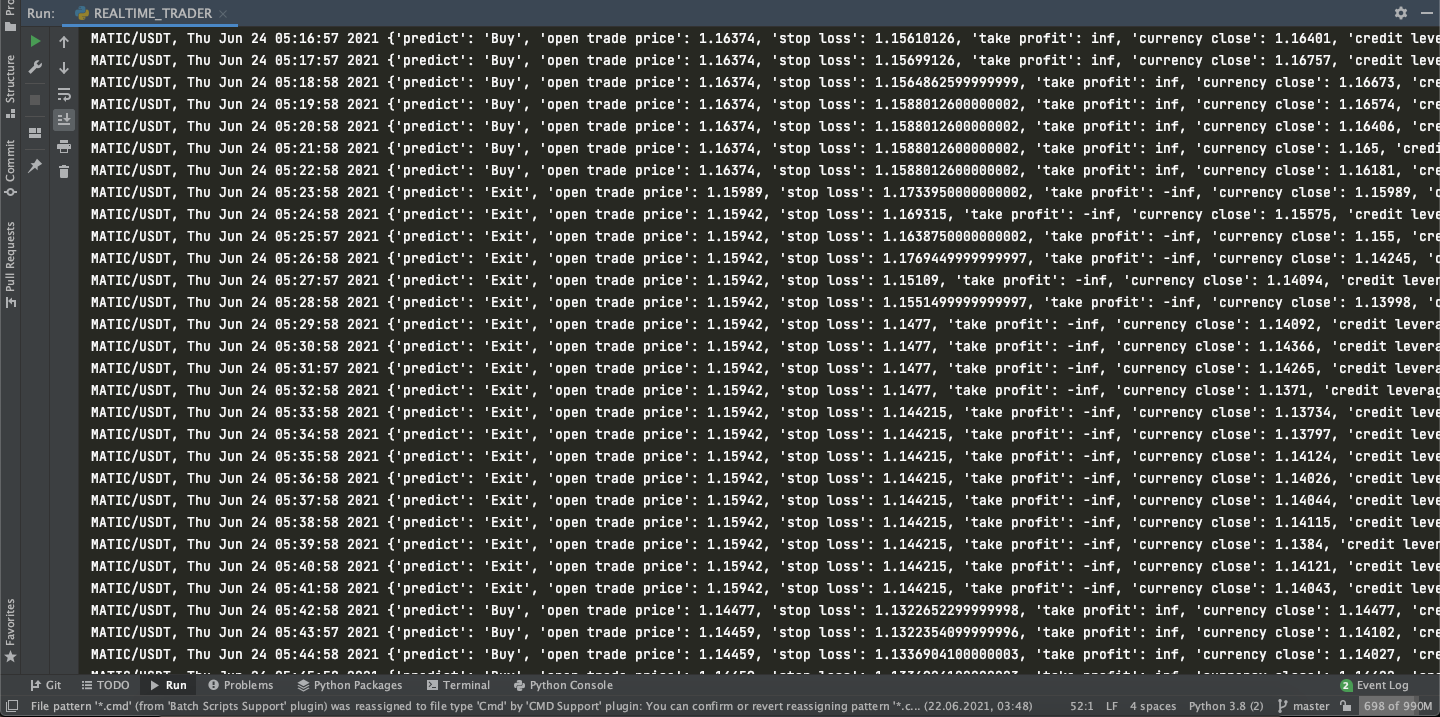Library for easy management and customization of algorithmic trading.
Project description
quick_trade
Dependencies:
├──ta (Bukosabino https://github.com/bukosabino/ta (by Darío López Padial))
├──plotly (https://github.com/plotly/plotly.py)
├──pandas (https://github.com/pandas-dev/pandas)
├──numpy (https://github.com/numpy/numpy)
├──tqdm (https://github.com/tqdm/tqdm)
├──scikit-learn (https://github.com/scikit-learn/scikit-learn)
└──ccxt (https://github.com/ccxt/ccxt)
- Documentation: 🚧 https://quick-trade.github.io/quick_trade/#/ 🚧
- Twitter: @quick_trade_tw
- Discord: quick_trade
Installation:
Quick install:
$ pip3 install quick-trade
For development:
$ git clone https://github.com/quick-trade/quick_trade.git
$ pip3 install -r quick_trade/requirements.txt
$ cd quick_trade
$ python3 setup.py install
$ cd ..
Customize your strategy!
from quick_trade.plots import TraderGraph, make_trader_figure
import ccxt
from quick_trade import strategy, TradingClient, Trader
from quick_trade.utils import TradeSide
class MyTrader(qtr.Trader):
@strategy
def strategy_sell_and_hold(self):
ret = []
for i in self.df['Close'].values:
ret.append(TradeSide.SELL)
self.returns = ret
self.set_credit_leverages(2) # if you want to use a leverage
self.set_open_stop_and_take(stop)
# or... set a stop loss with only one line of code
return ret
client = TradingClient(ccxt.binance())
df = client.get_data_historical("BTC/USDT")
trader = MyTrader("BTC/USDT", df=df)
trader.connect_graph(TraderGraph(make_trader_figure()))
trader.set_client(client)
trader.strategy_sell_and_hold()
trader.backtest()
Find the best strategy!
import quick_trade as qtr
import ccxt
from quick_trade.tuner import *
from quick_trade import TradingClient
class Test(qtr.ExampleStrategies):
@strategy
def strategy_supertrend1(self, plot: bool = False, *st_args, **st_kwargs):
self.strategy_supertrend(plot=plot, *st_args, **st_kwargs)
self.convert_signal() # only long trades
return self.returns
@strategy
def macd(self, histogram=False, **kwargs):
if not histogram:
self.strategy_macd(**kwargs)
else:
self.strategy_macd_histogram_diff(**kwargs)
self.convert_signal()
return self.returns
@strategy
def psar(self, **kwargs):
self.strategy_parabolic_SAR(plot=False, **kwargs)
self.convert_signal()
return self.returns
params = {
'strategy_supertrend1':
[
{
'multiplier': Linspace(0.5, 22, 5)
}
],
'macd':
[
{
'slow': Linspace(10, 100, 3),
'fast': Linspace(3, 60, 3),
'histogram': Choise([False, True])
}
],
'psar':
[
{
'step': 0.01,
'max_step': 0.1
},
{
'step': 0.02,
'max_step': 0.2
}
]
}
tuner = QuickTradeTuner(
TradingClient(ccxt.binance()),
['BTC/USDT', 'OMG/USDT', 'XRP/USDT'],
['15m', '5m'],
[1000, 700, 800, 500],
params
)
tuner.tune(Test)
print(tuner.sort_tunes())
tuner.save_tunes('quick-trade-tunes.json') # save tunes as JSON
You can also set rules for arranging arguments for each strategy by using _RULES_ and kwargs to access the values of the arguments:
params = {
'strategy_3_sma':
[
dict(
plot=False,
slow=Choise([2, 3, 5, 8, 13, 21, 34, 55, 89, 144, 233, 377, 610, 987, 1597]),
fast=Choise([2, 3, 5, 8, 13, 21, 34, 55, 89, 144, 233, 377, 610, 987, 1597]),
mid=Choise([2, 3, 5, 8, 13, 21, 34, 55, 89, 144, 233, 377, 610, 987, 1597]),
_RULES_='kwargs["slow"] > kwargs["mid"] > kwargs["fast"]'
)
],
}
User's code example (backtest)
from quick_trade import brokers
from quick_trade import trading_sys as qtr
from quick_trade.plots import *
import ccxt
from numpy import inf
client = brokers.TradingClient(ccxt.binance())
df = client.get_data_historical('BTC/USDT', '15m', 1000)
trader = qtr.ExampleStrategies('BTC/USDT', df=df, interval='15m')
trader.set_client(client)
trader.connect_graph(TraderGraph(make_trader_figure(height=731, width=1440, row_heights=[10, 5, 2])))
trader.strategy_2_sma(55, 21)
trader.backtest(deposit=1000, commission=0.075, bet=inf) # backtest on one pair
Output plotly chart:
Output print
losses: 12
trades: 20
profits: 8
mean year percentage profit: 215.1878652911773%
winrate: 40.0%
mean deviation: 2.917382949881604%
Sharpe ratio: 0.02203412259055281
Sortino ratio: 0.02774402450236864
calmar ratio: 21.321078596349782
max drawdown: 10.092728860725552%
Run strategy
Use the strategy on real moneys. YES, IT'S FULLY AUTOMATED!
import datetime
from quick_trade.trading_sys import ExampleStrategies
from quick_trade.brokers import TradingClient
from quick_trade.plots import TraderGraph, make_figure
import ccxt
ticker = 'MATIC/USDT'
start_time = datetime.datetime(2021, # year
6, # month
24, # day
5, # hour
16, # minute
57) # second (Leave a few seconds to download data from the exchange)
class MyTrade(ExampleStrategies):
@strategy
def strategy(self):
self.strategy_supertrend(multiplier=2, length=1, plot=False)
self.convert_signal()
self.set_credit_leverages(1)
self.sl_tp_adder(10)
return self.returns
keys = {'apiKey': 'your api key',
'secret': 'your secret key'}
client = TradingClient(ccxt.binance(config=keys)) # or any other exchange
trader = MyTrade(ticker=ticker,
interval='1m',
df=client.get_data_historical(ticker, limit=10))
fig = make_trader_figure()
graph = TraderGraph(figure=fig)
trader.connect_graph(graph)
trader.set_client(client)
trader.realtime_trading(
strategy=trader.strategy,
start_time=start_time,
ticker=ticker,
limit=100,
wait_sl_tp_checking=5
)
Additional Resources
Old documentation (V3 doc): https://vladkochetov007.github.io/quick_trade.github.io
License
quick_trade by Vladyslav Kochetov is licensed under a Creative Commons Attribution-NonCommercial-ShareAlike 4.0 International License.
Permissions beyond the scope of this license may be available at vladyslavdrrragonkoch@gmail.com.
Project details
Release history Release notifications | RSS feed
Download files
Download the file for your platform. If you're not sure which to choose, learn more about installing packages.
Source Distribution
quick_trade-7.9.8.tar.gz
(39.5 kB
view hashes)


















